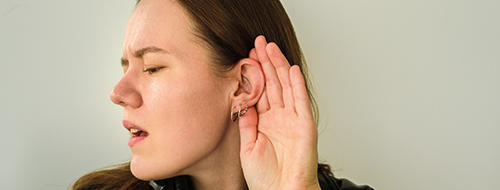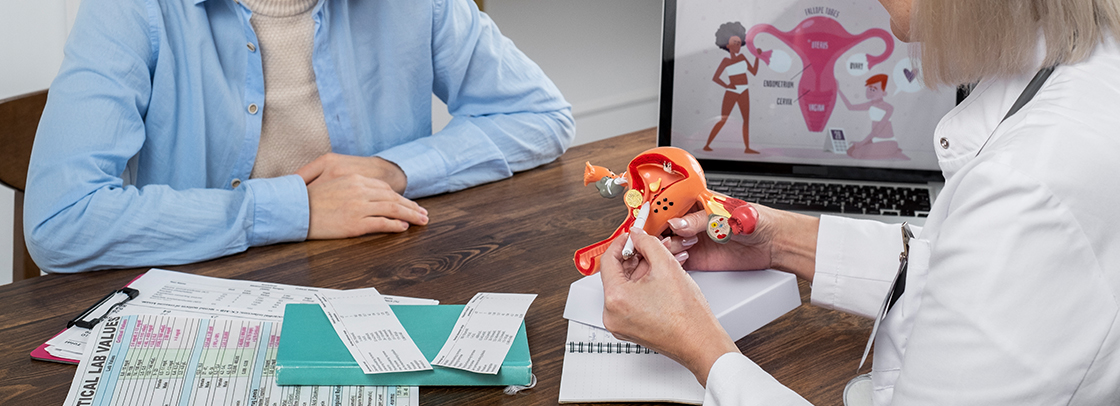Technological breakthroughs have transformed how we live and interact with one another in the contemporary world today.
Constantly communicating via cellphones and laptops using headphones and speakers, we all are surrounded by electronic devices. Every device emits sounds of varying frequencies and intensities can lead us all to deal with hearing problems. Although these devices have made our lives easier they have also raised our chances of driving us deaf one day.
In this essay, we’ll take a glance at how the modern world is becoming more susceptible to hearing loss and how each one of us can take better care of our ears to avoid hearing problems in the future.
Multiple aspects contribute to hearing loss
According to the World Health Organization, around 1.1 billion youth in the world are at risk of developing hearing problems owing to harmful listening activities.

The increased use of devices, such as headphones and earbuds, is one of the leading factors of hearing loss in the modern world. These devices are now widely used, with the majority responsible for our day-to-day communications.
These devices magnify sound waves and transport sound directly into the ear canal, avoiding the outer ear. The sensitive hair cells of the inner ear are in charge of turning sound into electrical signals. The brain usually understands these signals which are susceptible to getting harmed by high-frequency sound waves. Once injured, these hair cells cannot be regenerated or recovered, resulting in permanent hearing loss.
Noise pollution contributes to disruptive or damaging sounds that interfere with our typical activities, such as sleeping, conversing, and socializing. They can originate from many sources, such as vehicular traffic, building sites, industrial action, and entertainment places.
The World Health Organization warns that continuous exposure to noise levels exceeding 85 decibels (dB) can harm hearing power. Therefore, as our population grows, so does the density of our communities. This makes it harder for people to avoid potentially damaging noise. Constant anxiety, exhaustion, and tinnitus might lead to hearing loss.
Factors like age and genetics are primarily responsible for hearing loss. As we age, the structures in the inner ear might degenerate, leading to a gradual loss of hearing. This is a condition called presbycusis and is a natural age-related hearing loss. Distinct forms of hearing loss are also caused by genetics. These often include inherited illnesses that damage the structures of the inner ear creating genetic abnormalities that affect other sections of the body.
Which type of hearing loss you might experience?
There are three main types of hearing loss: sensorineural loss, conductive loss, and mixed loss. Each form of hearing impairment has unique causes, symptoms, and treatments.

Sensorineural Hearing loss
It is the most general form of hearing loss, accounting for approximately 90 percent of all cases. It occurs when the inner ear or the auditory nerve connecting the ear and brain is damaged. Many factors, including aging, exposure to loud noise, heredity, and some medical issues, can cause this damage.
Sensorineural hearing loss can appear as a tribulation in understanding speech, notably in busy surroundings such as muffled or distorted sounds. Additionally, it may include symptoms like tinnitus, ringing or buzzing in the ears, and the inability to differentiate sounds with similar frequency.
Typically, hearing aids or cochlear implants are utilized to treat sensorineural hearing loss. Rarely, medication or surgery may be prescribed to treat underlying medical disorders.
Conductive hearing loss
It occurs in a medical problem with the outer or middle ear preventing sound waves from reaching the inner ear. Many reasons might contribute to this condition, including earwax buildup, ear infections, perforated eardrums, and structural abnormalities in the ear.
Conductive hearing loss is marked by complications like faint sounds and experiencing the sounds being muffled or blocked. Those with conductive hearing loss may also experience ear pain or distress.
In some instances, removing earwax or treating an ear infection may be sufficient to restore hearing. Sometimes, surgery is essential to fix a perforated eardrum or correct an ear structural defect. Hearing aids may also be prescribed to improve hearing and amplify sounds.
Mixed Hearing loss
It occurs when symptoms of sensorineural and conductive hearing loss are experienced. This takes place when the outer or middle ear and the inner ear or auditory nerve are damaged. Multiple factors, including chronic ear infections, head trauma, and certain medications, can lead to mixed hearing loss.
Mixed hearing loss can manifest as a combination of sensorineural and conductive hearing loss symptoms. Mixed hearing loss is treated based on the underlying cause and stringency of the hearing loss. In some instances, medication, surgery, and hearing aids or cochlear implants may be recommended.
What measures may we take to protect our hearing?

Use Lower Volume Levels
Over time, long exposure to loud music can cause irreversible damage to these hair cells, resulting in hearing loss. This damage is frequently irreparable, meaning it cannot be healed once it has occurred.
Limiting the Duration of Using Communicable Devices
The longer we wear earbuds or headphones, the higher the chance of developing hearing loss. The use of these devices can lead to auditory fatigue. Also, prolonged usage of earbuds and headphones can cause irreversible damage to the inner ear’s hair cells. This occurs when the inner ear’s hair cells become overworked and unable to operate correctly, resulting in a temporary loss of hearing in one or both ears.
Avoid sites of noise pollution
The most effective method for preventing hearing loss is to avoid exposure to loud noises. Using earplugs or earmuffs can assist in minimizing the quantity of sound that reaches your ears. Also, taking breaks from continuous work near loud sounds and restricting your ear’s vulnerability to noisy surroundings is also helpful in protecting your ears.
Enhancing lifestyle
Although it is impossible to avoid age-related hearing loss altogether, there are steps you may take to lower your risk of developing it. Age-related hearing loss can be slowed by protecting your ears from loud noise and maintaining wonderful general health, such as exercising regularly and avoiding smoking.
Lastly, we would like to know what precautions are you taking to preserve your ears in this modern world and, if not, how are you managing with the right tools and strategies to combat the problem of hearing loss.
If you have any questions related to this article, post a comment below and let us know one thought that provoked you to become more aware of protecting your ears.
Conclusion
Unimarck Pharma is one of India’s most prominent pharmaceutical companies in the Northern region. Our company has over 39 years of experience in the pharmaceutical industry and has been consistently striving to retain our superiority in manufacturing and operations. This has enabled us to serve the Indian public throughout the country. Therefore, our sincere desire is to contribute to the Indian public through quality pharma products while also adding a comprehensive understanding of various medical conditions with the intent of securing a hopeful future.



